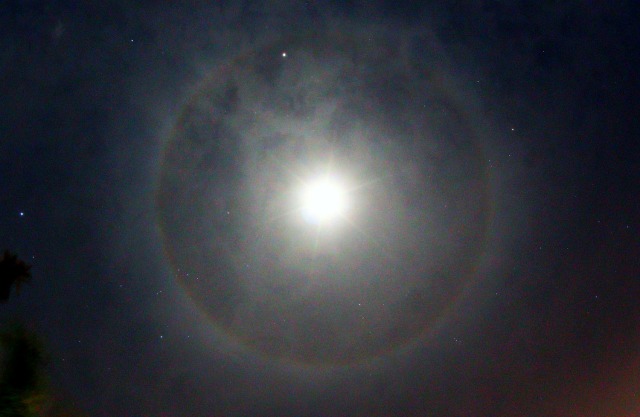Filtered By: Scitech
SciTech
The magic and science of lunar haloes
By TJ DIMACALI, GMA News

Filipinos were treated to a breathtaking spectacle on Monday night, January 13, as the moon appeared to be surrounded by a halo— an unusual sight, and one that many thought to be nothing short of magical.
And, in fact it was. But not in the way that you might think.


Photo: Raymund Sarmiento
Portents and augury
As the nearest heavenly body to the Earth and the brightest object in the night sky, the moon has fascinated mankind since the dawn of time.
Our word "lunatic", for instance, ultimately derives from the Latin word for moon and hearkens back to a time when people afflicted with epilepsy or madness were thought to have been "moonstruck" or "touched by the moon".
Also, humanity's oldest calendars were lunar ones, marking the seasons and tides—telling our ancestors when to plant and when to fish.
It's no wonder then that the moon has always been associated with fortune-telling, and anything out of the ordinary in its appearance considered an augury of things to come.
A halo around the moon, such as the one that occurred Monday night, is traditionally thought to be a portent of rain.
Science and magic
Interestingly enough, there's a bit of scientific truth to this bit of folklore.
Such haloes are formed when moonlight passes through cirrus clouds high up in the atmosphere. These clouds can sometimes be found on the advancing edge of a warm front, ahead of the much heavier rain clouds, so haloes can indeed precede rainfall—but not always.
But here's the magic part:
These clouds contain ice crystals, which act as prisms to bend the moon's light in such a way as to form a halo or corona when viewed at just the right angle.
There are possibly millions of these tiny crystals floating about in those clouds, but it's only those crystals that happen to be in the right position between the moon and your eye that produce the optical effect.
Someone else looking up at the moon, even if she is directly beside you, would be seeing the same phenomenon but through a completely different set of ice crystals.
Which means that each halo is special and unique to the person viewing it.
"Like rainbows, halos around the sun – or moon – are personal. Everyone sees their own particular halo, made by their own particular ice crystals, which are different from the ice crystals making the halo of the person standing next to you," says EarthSky.org.
"Like rainbows, halos around the sun – or moon – are personal. Everyone sees their own particular halo, made by their own particular ice crystals, which are different from the ice crystals making the halo of the person standing next to you," says EarthSky.org.
That halo you saw last night? It's yours and yours alone. And that's nothing short of magic. — GMA News
More Videos
Most Popular




